Nate was used to sailing a sloop and found that the trimming of the sails on the schooner had more impact on steering than speed.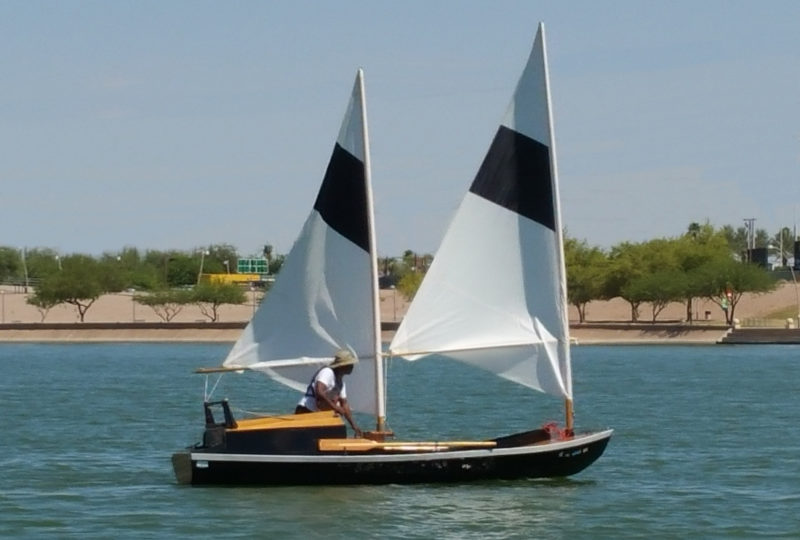 Dilsie V. Morrison
Dilsie V. Morrison
Join The Conversation
We welcome your comments about this article. To include a photo with your remarks, click Choose File below the Comment box.

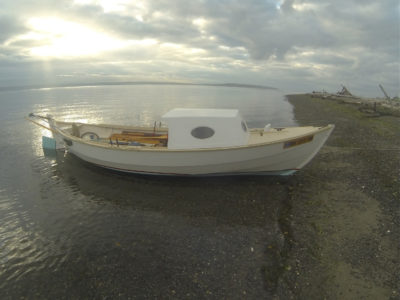
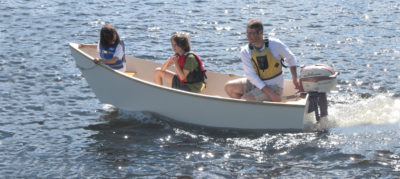
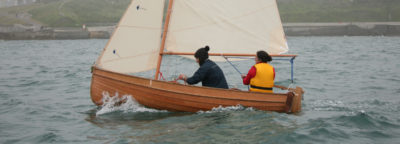

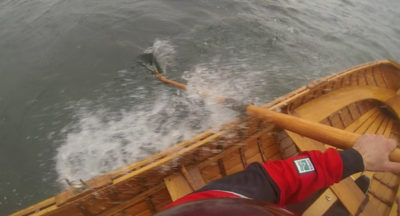
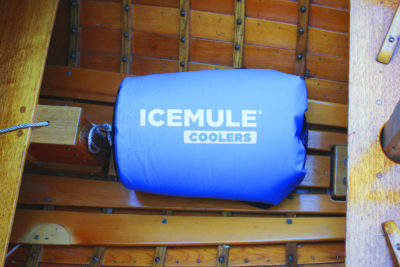
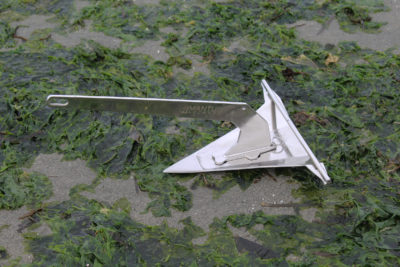
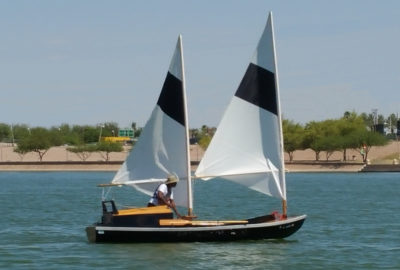

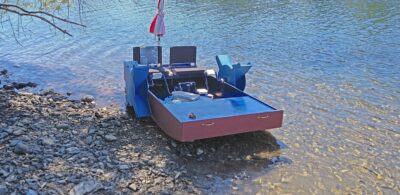
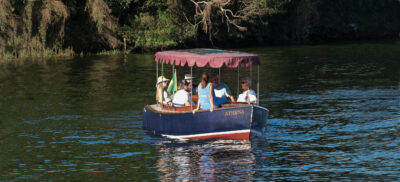

Very nice, Nate! All anyone ever needs. Good luck sailing and with your health as well.
Thank you.
Wonderful Nate, Many wakes….
Thank you
I have built nearly 20 boats (some were rebuilds and or repairs, and I would definitely be proud of your boat, Nate. You did a really good job. I love that you built her first with junk ply and then used those for patterns. I like the look of her. I love boats like this that any person with determination and patience can build themselves. I would like to see photos and a description of the electric motor set up in your rudder. Nice job. Thanks for sharing with us.
Michael, I did learn that there is room for improvement in the rudder design. I’m thinking about making another rudder with more cut out in front and longer below the motor. The cut out would help compensate for the offset of the pivot point of the motor. Making it longer would provide better control in light air.
Nice boat, but wouldn’t it be more properly called a cat-ketch rig? I have always been under the impression a schooner had the taller mast and mainsail aft, and a smaller fore sail up forward. On a ketch, the mainsail is forward, and the smaller sail aft is called the mizzen. A cat ketch is a ketch without any headsails (jib).
The fore mast is 15′ 9″ and the main is 17′ 2″. Normally that would fit the definition of a schooner rig, but masts are interchangeable and I prefer having the taller mast forward because of the way I constructed it. It is taller but lighter and puts less weight forward.
Sweet boat, elegant in its simplicity. I am curious about the umbrella with tie-downs. Who makes it? website?
It’s made by TaylorMade. It’s call the Anchor Shade III and comes in several different colors.
Well done job, Nate. The boat should provide much satisfaction on your relatively sheltered water environment. I happen to be a true believer in bilge keels. They need to be more at an angle to be fully effective when a boat heels under sail, and I would reduce the massive skeg to a smaller one to reduce wetted surface, improve your sailing performance, and still have the boat to sit upright when beached.
Thank you
Although the height of the foremast might suggest a ketch, the fact that the aft sail has a double sheet and the fore a single, would suggest to me that it is a schooner.
Yup, a boat to be proud of, Nate. Could be just what I’m looking for. Couple questions:
What did it cost to build?
How does the cockpit drain if the going gets wet?
Hey, Nate, I like it The front face of the cabin looks like it makes a fine backrest. Looks like the boat fits your needs very well. Nice job.
A beautiful boat, thanks for giving fuel to dreams. One day….
I have a Fred Shell Swifty 12 that I built from plans about 8 years ago. Love it, Fred designs good sailing simple boats, and I’ve looked at the Schooner 18 a few times as well. One thing I love is the lack of standing rigging and how quickly you go from trailer to sailing.
Great job Nate, but as anyone who has built a boat will tell you, you never build just one!
Finally, I see a nice boat with twin leg-o-muttons! I am rigging my Gheenoe classic (15’-4″) with these sails and lee boards and making the 15 hp Evinrude do double duty with a rudder board attached to the motor. I know, it’s a “Clorox bottle” but it fits my time line and gets me on the water! As a retired timber farmer I really want to build a boat, but maybe later!
Not a woodworker or craftsman? I think we can banish that thought.
Good work Nate!
Robert
This is truly an amazing boat and an amazing Nate.
Beautiful boat, Nate! Well done! You might want to look at some of the Phil Bolger designs that use an end plate to improve rudder response. Could be a quick remedy for the steering issue.